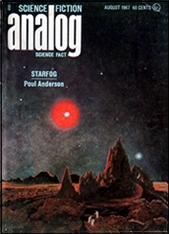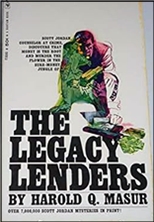Thu 5 Sep 2024
SF Diary Review: GALAXY SF – August 1967.
Posted by Steve under Diary Reviews , Magazines , Science Fiction & Fantasy[9] Comments
GALAXY SF – August 1967. Editor: Frederik Pohl. Cover artist: Dember. Overall rating: ***
ROBERT SILVERBERG “Hawksbill Station.” Novelette. Reviewed separately and appearing here. (4)

ROGER ZELAZNY “Angel, Dark Angel.” Dark Angels bring death to individuals who threaten the stability of galactic society, Of what significance is Sensibility? (2)
K. M. O’DONNELL “We’re Coming through the Windows.” A letter to Mr. Pohl about a time-machine. Funny but hopeless. (1)
R. A. LAFFERTY “Ginny Wrapped in the Sun.” Reversible evolution, told Lafferry-style. Is this based on an Asimov article? (3)
RICHARD WILSON “9-9-99.” Letters between the last two men on Earth, about a bet that can’t be paid off. (2)
H. H. HOLLIS “Travelers Guide to MegaHouston.” Non-fact article. The domed city of the future has its roots today in the Astrodome and the US pavilion at Expo76. Not very interesting. (1)
TED THOMAS “The Being in the Tank.” A strange man appears in the works of a hydrazine plant. Why didn’t this appear in Analog? (2)
LINDA MARLOWE “Hide and Seek.” Population controlled by a children’s game. (3)
MIRIAM ALLEN deFORD “The Great Stupids.” Discrimination because of age, and how to combat it — with soda pop. (2)
POUL ANDERSON “To Outlive Eternity.” Serial; part 2 of 2. Review to be posted here soon.








